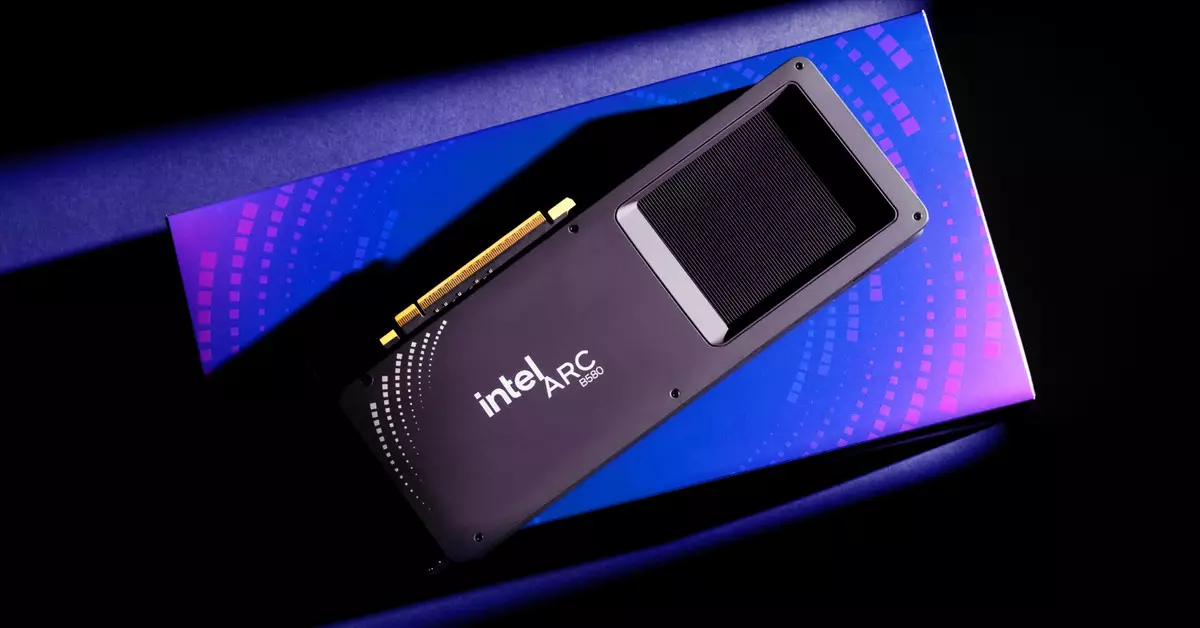Intel, a titan in the realm of computing, has faced its fair share of tribulations in recent years, particularly in its discrete graphics card endeavors. However, the introduction of the Arc B580 “Battlemage” GPU marks a significant turnaround for the company, bringing both excitement and praise from the tech community. This article aims to explore the salient features of this new GPU, its competitive positioning, and the implications for both Intel and consumers in the ever-dynamic world of graphics hardware.
The Arc B580 stands out in a market that has often left consumers frustrated due to skyrocketing prices and insufficient performance. Priced at $250, the GPU has quickly garnered a reputation for being a “glass of ice water in GPU hell,” a critical yet apt description for a product that enters a landscape dominated by underwhelming offerings from competitors like NVIDIA and AMD. With previous iterations failing to resonate with gamers, the B580 emerges as a beacon of hope, positioning itself as an affordable and capable alternative.
Early reactions from reviewers illustrate a strong consensus regarding the card’s merits. While it may not consistently outperform competing models like the RTX 4060 or AMD RX 7600, particularly at 1080p resolution, its average performance is deemed commendable. The GPU boasts 12GB of video RAM, a feature that enhances its value proposition. In an age when gamers are becoming increasingly discerning and performance-oriented, the B580’s combination of price and capability makes it hard for many to ignore.
Intel’s marketing strategy for the B580 appears to have hit the mark, leading to a notable spike in demand. Reports suggest that retailers have sold through initial inventories almost instantaneously. Intel’s spokesperson, Mark Anthony Ramirez, has indicated that the company is actively working to replenish stock weekly, showcasing a commitment to meet burgeoning market demand.
Analysts suggest that this reaction is not merely a fleeting interest; it may reflect a deeper dissatisfaction with offerings from rivals. When products that were once considered standard bearers in performance—like NVIDIA’s RTX 4060—are likened to a “wet fart,” it indicates a market ripe for change. The contrast between the established competitors’ lackluster receptions and the warm embrace of the B580 underscores a shift in consumer expectations.
Examining performance metrics reveals a nuanced picture. While the Arc B580 may not outshine the RTX 4060 and RX 7600 across all gaming scenarios, its maturity as a product is undoubtedly a point of discussion. Critics have pointed out that early drivers for Intel’s graphics cards were sometimes buggy; however, the B580 reflects a maturation process that indicates a focus on consumer experience.
This evolution has likely stemmed from Intel’s commitment to refining their graphics solutions. As one reviewer pointed out, the B580’s drivers seem more polished compared to Intel’s earlier attempts in the GPU sector. It’s evident that, despite some shortcomings, the Arc B580 represents a significant move in the right direction, paving the way for Intel’s potential resurgence in graphics hardware.
Looking ahead, the future is teeming with uncertainty, particularly as both AMD and NVIDIA eye their next-generation GPU releases. Retailers like Newegg are already hinting at restocks and new models, making it imperative for Intel to maintain momentum in this fiercely competitive landscape.
Moreover, the fact that alternative variants of the B580, such as those from Gunnir, are already hitting the market at a higher price point indicates a burgeoning ecosystem around Intel’s latest offering. As consumers adapt to frequent price fluctuations and varying availability, Intel’s ability to sustain both interest and adequate supply will be crucial in retaining its newfound traction.
In summation, Intel’s Arc B580 GPU has succeeded in capturing the attention and respect of the market in ways its predecessors did not. While there remain challenges ahead, particularly with competition looming, the B580 embodies a promising evolution for Intel within the graphics card arena. Through continuous improvements in performance and availability, Intel may well be on the path toward revitalizing its standing among gamers and tech enthusiasts alike. As the landscape shifts, the industry will be watching closely to see if Intel can leverage this momentum into long-term success.


Leave a Reply